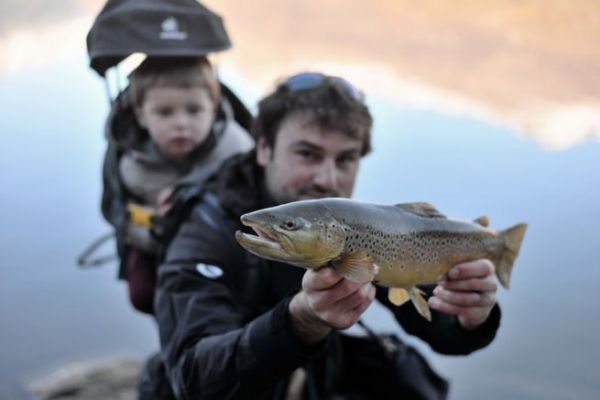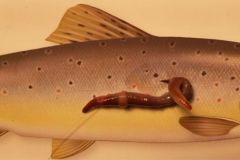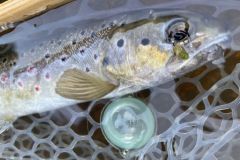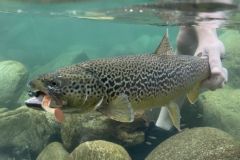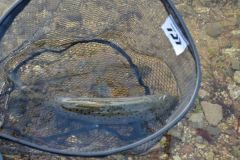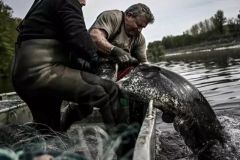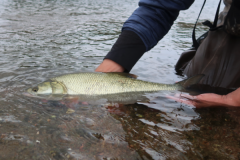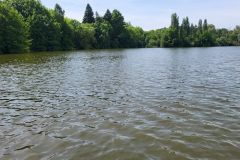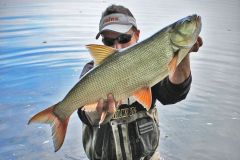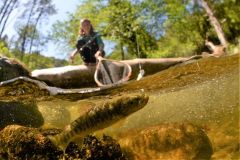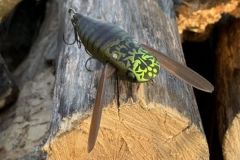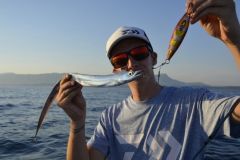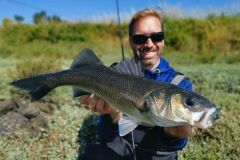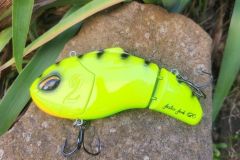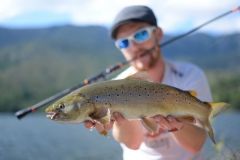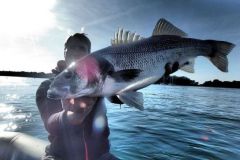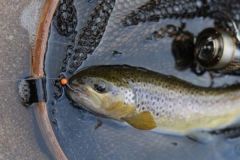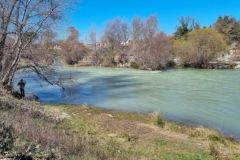A safety and regulatory update
Dam lakes are impoundments of water of varying size, located upstream of power stations whose water is used to drive turbines that generate electricity.
They are often located in mountainous environments, where the steep slopes make it easy to operate, with water flowing in under pressure simply by gravity, without the need for pumping.
This is one of the reasons why trout can be found in these dam lakes. These are nothing more or less than industrial structures implanted in the landscape. Stored water has a very specific role, and fishing is often only a secondary concern... The water level varies constantly, and the banks are sometimes submerged, sometimes dry. These sharp variations in water level make the banks unstable and dangerous.
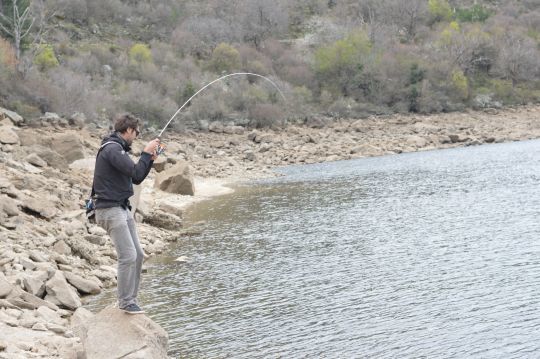
Boulders are often poorly stacked, there are often fragile deadwoods, relics of the valley's past which can act as traps, or muddy areas resulting from the accumulation of fine sediments... So, before venturing out onto the banks, it's essential to take all the necessary precautions.
Good non-slip shoes are a must! In addition to the safety aspect, it's important to be informed and to know which areas are authorized for fishing. For example, it is forbidden to fish from dams or too close to structures used for fishing. Signs often indicate prohibited zones.
Trout with a distinctive behaviour
High-altitude reservoirs "cutting through" first-category rivers are almost always home to salmonids.
The rich, fast-warming water is ideal for the development of bait fish such as minnows, gudgeon, whitefish fry and sometimes gambusia or pseudorasboras. These small, rich prey are omnipresent at all times of year and are prime targets for trout, which gorge themselves on them. The trout, particularly ichthyophagous and carnivorous, are fat and not as sharp or slender as in rivers, thanks to the abundance of food and absence of current.
The large volume of water also allows trout to grow.
The dammed lake also offers a certain "comfort" for the fish, with lower temperature amplitudes than in rivers, and activity less dictated by variations in current strength and water level. Lake trout grow faster than river trout, which explains the presence of large and even very large fish.
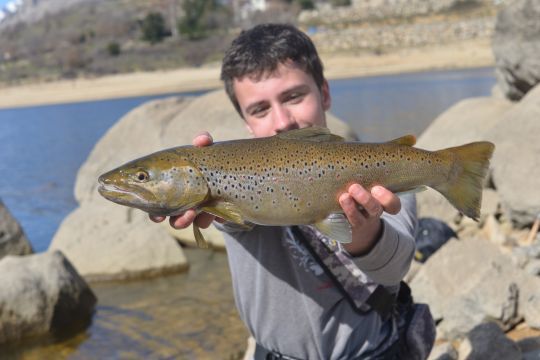
To spawn, these salmonids swim up the tributaries and streams that supply the lake with fresh, oxygenated water. Lake water is often murkier than river water, giving trout a duller or even lighter color (they often lose their red spots). These fish have become pelagic, evolving in large expanses of water.
From a technical point of view, these heavy and powerful trout can be fished using several methods, with the main idea being to prospect the largest possible volume of water. We'll take a closer look at fishing for these trout using three different types of lures.
Soft lures
The key word is prospecting. You have to beat the ground and make your lure stand out. Trout, unlike many predators, move through the whole water height, from the surface to the bottom. Among the lures you can use, soft lures are, in my opinion, the ones that select the most beautiful fish. There's no need to use lures that are too big; you need a lure that matches the prey present.
Among soft lures, I've had excellent results with finesse lures, which allow you to prospect and trigger numerous attacks. This technique is particularly effective on lakes, as it allows you to quickly prospect a large volume of water.
For the same weight of sinker, a finesse lure will sink faster than a shad or comma, as it offers less resistance and friction in the water. This makes it possible to fish deeper and deeper, while still having a dynamic, lively swimming action. To my knowledge, this is one of the lures that does it best! You can easily juggle between lures from 4'' (10 cm for large lake trout from dams, for example) to 2'' (5 cm for trout or char from high altitude lakes). You need to adapt to the size of your prey and predators. Shads with a high lead content (10 to 15 grams for a 10 cm shad, which is quite substantial for trout fishing) enable aggressive swimming and methodical prospecting in deep areas lined with riprap. Be careful, however, not to fish too heavy, as this may result in more snags on the bottom and hamper the lure's swimming action.
Swimming fish
Swimming fish complement soft lures for prospecting edges. Sinking jerkbaits and minnows allow you to cast easily and accurately, even into the wind. Here too, their size should correspond as closely as possible to the size of the prey present. Sinking swimbaits are better at prospecting and have a more aggressive swimming action than floating lures.
You'll have to "get in" by using strong jerks and twitches to throw the lure off balance. This erratic and irregular swimming action will inevitably trigger the aggressiveness of chasing salmonids. In addition, beware of flush attacks, which account for a very high percentage of bites! Trout are particularly fond of hunting by targeting, pulling back and isolating a fish from the open sea towards the bank to intercept it in shallow water... In addition to minnows, you can also consider using lipless lures that cast far and sink fast, or dartminnows.
Metal lures
Let's finish with the classics, though not necessarily the most widely used today. Wobbling spoons remain timeless. They're easy to use and highly effective. The difference often lies in the retrieve rate and the depth at which it is moved. You'll need to vary these parameters to find what appeals to lake trout that day. Once the first fish has been hit, it's not uncommon to follow up with a series of strokes using the same animation and swimming depth that produced the first hits.
Hardware
In terms of equipment, I opt for a versatile and sensitive combo, capable of supporting several techniques. For me, a 2.10 m to 2.40 m rod is the right compromise between casting distance and casting accuracy. The power will correspond to the size of the fish targeted.
A Medium Light (ML) allows the use of a large number of lures and is already capable of fighting some impressive specimens.
I commonly use the Illex Pepper S2102ML akoya pearl or the Stream Master S2102ML "Trout Opportunist".
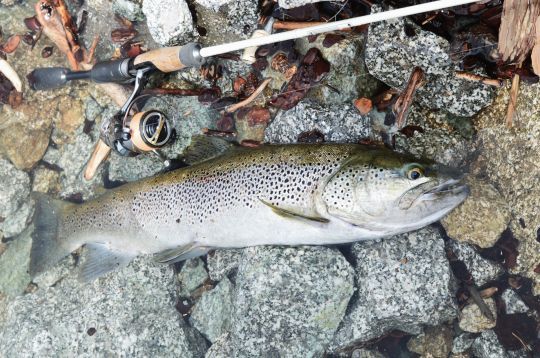
For balance, I equip my rod with an intermediate-ratio reel in size 2500. This will be fitted with nylon or 10-lb braid. Finally, when my line body is braided, I use a large fluorocarbon leader for discretion, but also for its resistance to abrasion. In fact, in dam lakes full of obstacles, trout have the vice of rubbing the line.
Remember to set your drag correctly. It needs to be firm enough at the touch for a powerful strike (on big fish), but it needs to release line easily on rushes that can take 30 m of line or more!
I'd also like to stress the need for good footwear, preferably high-top shoes for optimum ankle support, and for greater comfort and safety. Finally, I'd like to emphasize the use of a long-handled landing net, which helps to shorten the fish's fight and finalize the catch without a "stunt" on these unstable banks.
